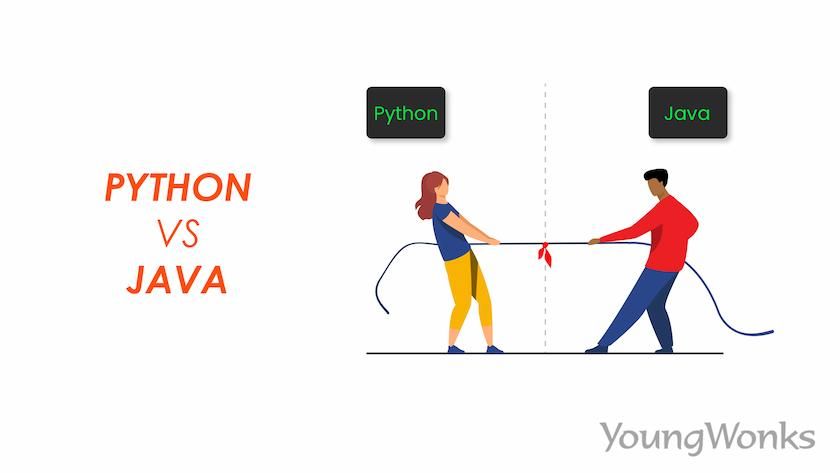Mar 09, 2023 By Team YoungWonks *
What is a programming language?
A programming language is a form of communication that allows us to communicate instructions to computers. It is a tool for writing programs that tells a computer how to perform a task. Programming languages are made up of various components such as variables, constants, functions, data types and logic structures which are combined to create software programs. A programming language can be a compiled language or an interpreted language.
Difference between compiled and interpreted languages
A compiled language is a type of programming language that is translated into machine code before the program can be executed. The translation process turns the high-level language code into instructions that are specific to the computer system being used. Compiled languages are usually much faster than interpreted languages because they have been optimized for speed and efficiency, but they also require more effort on the part of the programmer to write and debug.
Interpreted languages, on the other hand, are not compiled before execution; instead, an interpreter reads each line of code as it is encountered and then executes it accordingly. Interpreted languages do not require compilation and can run directly from the source code, making them easier to write and debug. However, this also means that interpreted languages are slower than compiled languages because there is no optimization for speed or efficiency.
What is Python?
Python is a high-level, interpreted, general-purpose programming language. It was created by Dutch programmer Guido van Rossum in 1991, and it is popular due to its easy-to-read syntax and code readability. Python enables developers to create applications quickly yet with the highest quality standards, using less code than other languages. Additionally, Python offers a large library of modules, making it easy to extend functionality without having to write extra code.
Advantages of Python
- Python is an easy-to-learn programming language that is ideal for beginners, due to its simple syntax and readability.
- Python is an interpreted language, which means that Python code can be quickly executed without any extra steps or tools.
- Python developers can choose from different modules to extend the functionalities without having to write a lot of code.
- Python offers excellent support for code reuse, allowing the developers to create applications quickly and with high quality standards.
Disadvantages of Python
- Python is not suitable for game development, as it does not provide the necessary performance.
- The absence of native compatibility with iOS and Android proves to be a difficult barrier for mobile app developers.
- Python's dynamic type system can lead to unexpected runtime errors.
- Python has a slower execution speed compared to other programming languages such as Java and C++.
- Python code is more difficult to maintain than other programming languages due to its dynamic nature.
What is Python programming used for?
Python programming is used for a wide range of applications, including backend web development, software engineering, artificial intelligence, machine learning, and data visualization. It is also popular for creating desktop GUIs (graphical user interfaces) and scripting language applications. Python is an excellent choice for handling large amounts of data due to its scalability and ability to interact with databases. Additionally, it is widely used in scientific computing because of its simplicity when compared with other programming languages.
What is Java?
Java is a general-purpose programming language created by James Gosling at Sun Micro-systems in 1995. It was designed with the intention of being "write once, run anywhere", meaning that it could be compiled and run on any platform without needing to be recompiled. Java is an object-oriented programming language and has a large collection of standard libraries. These Java libraries make it popular for many types of applications.
Advantages of Java
- Java is a platform independent language, meaning it can be compiled and run on any system with the Java Virtual Machine (JVM).
- Java is an object-oriented programming language, which makes it easy to create modular programs and reusable code.
- Java has a rich library of standard libraries, which makes it easier for Java developers to write code.
- Java is a secure language, as it has built-in security features to help prevent malicious code from running on the system.
- Java is a popular choice for Android app development due to its platform-independent nature, object-oriented design and large set of standard libraries.
Disadvantages of Java
- Java is slower than other programming languages such as C++.
- The memory management in Java can be inefficient at times.
- Java has a steep learning curve for beginners.
- The syntax of Java can be confusing and difficult to learn.
- Debugging can be challenging due to the complexity of the language.
What is Java used for in programming?
Java can be used to develop desktop GUI (graphical user interface) applications, mobile apps, games and embedded systems. Furthermore, Java is widely used in server-side web applications due to its robustness, scalability and fast performance. Java is also the preferred language for developing large enterprise projects due to its ability to handle concurrent requests without any impact on performance. It also offers libraries for performing security checks as well as data encryption which provides extra layers of protection for applications that handle sensitive information or processes. With its vast library support and flexible syntax, Java makes it easy for developers to create innovative solutions quickly and easily.
Code comparison: Java vs Python
In this section, we will see how Java code is different from Python code. Let's write a program that checks whether the given number is even or not.
Java program to check for even number
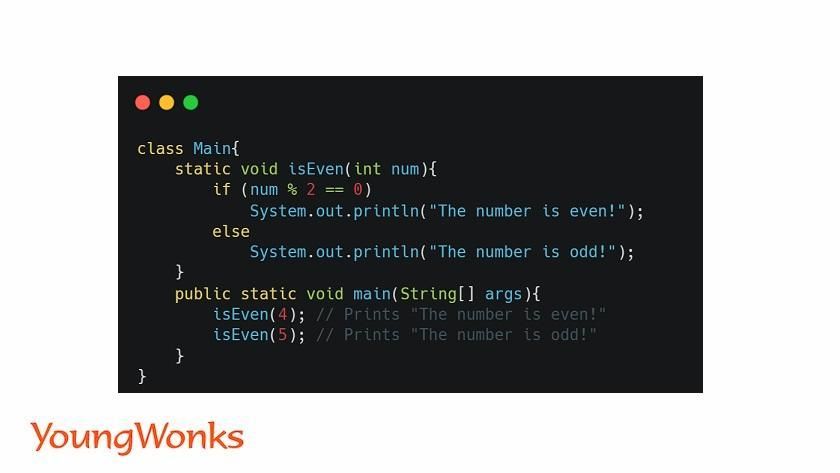
Python program to check for even number
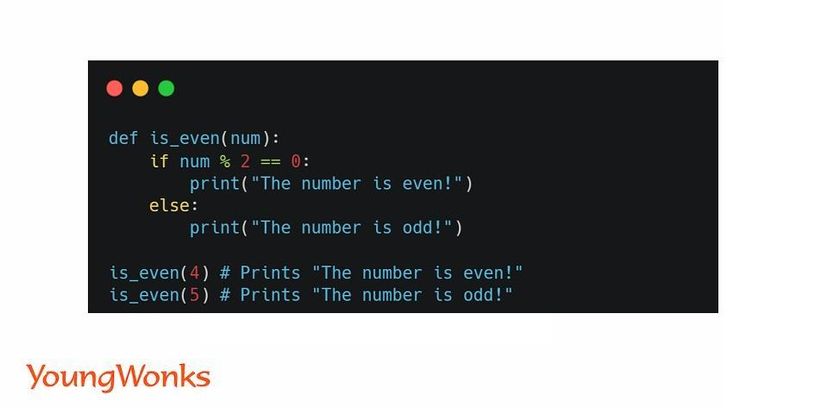
From the above programs, we can clearly see that the Python code is smaller as compared to the Java code.
Key differences between Python and Java core concepts
In this section, we are going to cover some of the most fundamental Python and Java concepts. We will also discuss how these concepts work differently in these popular programming languages.
Compiled or Interpreted
Python is an interpreted, high-level programming language while Java is a compiled, object-oriented language.
Syntax
When it comes to syntax, Python follows a simpler structure than Java with fewer lines of code needed to accomplish the same tasks. In Python, indentation is used to define code blocks, while Java uses curly braces to define them. Also, semicolons are used to denote the end of a line in Java and are optional in Python. Writing a Hello World program in Java itself needs a class to be written, while in Python it is only one line of code.
Speed
When it comes to speed, Java is faster than Python due to its compiled nature. Compiled languages are usually more efficient than interpreted languages. However, Python has a wide range of libraries that makeup for its slower speed and make it ideal for certain tasks.
System requirements
To execute code, Java needs the Java Virtual Machine (JVM) that runs on top of a physical computer and provides the ability to execute Java bytecode compiled from Java programs. The JVM acts as an interpreter between the hardware and software, allowing multiple operating systems and applications to be run at the same time. It provides users with the flexibility to run different versions of the Java Runtime Environment (JRE) without having to install additional software on their machines.
Unlike Java, which requires the JVM to execute code, Python is an interpreted language that runs on its own interpreter. This means that it can run directly on the host machine without any virtualization or emulation needed. Python's interpreter is also much simpler and easier to use than Java's, making it a much more popular choice for beginners. Additionally, Python also supports cross-platform compatibility, meaning developers can write code once and run it on different machines without any additional changes.
Source code
Java source code consists of statements and declarations that define the behavior of a program. Source code files are typically saved with the .java extension and contain all of the commands, variables, classes, methods, and packages required to run a program.
Python source code enables developers to create complex programs with fewer lines of code than Java. Both Python and Java are object-oriented programming languages, but Java uses static types, while Python is dynamic.
Execution process
To run Java programs, the source code needs to be compiled into bytecode which can then be executed by the JVM. The compilation process is done through a command-line tool called javac which takes source files as input and compiles them into bytecode files. Once the compilation is done, the bytecode can be executed by the JVM using a command-line tool called java.
On the other hand, to run code in Python, we use the Python interpreter, which is an interactive command-line shell that allows us to type in and execute code instructions. It provides a rich set of features for debugging and development, such as syntax highlighting, auto-completion, and argument completion.
Memory management
Garbage collection is an important part of Java for efficient memory management. It refers to the process of automatically reclaiming memory from objects that are no longer being used. The Java Virtual Machine is responsible for performing garbage collection on a regular basis to free up memory and prevent memory leaks.
Similarly, in Python, memory management is handled automatically. The Python interpreter is responsible for allocating and de-allocating memory for different variables and objects in a program. Memory management in Python is based on reference counting and garbage collection, which helps to ensure that memory is used efficiently, and all unused variables are cleaned up.
Object Oriented Programming
Object Oriented Programming (OOP) is a programming paradigm which uses classes and objects to model real world situations. In Java, OOP is used to create programs that are more efficient, flexible, and maintainable. OOP allows for the definition of classes which define the data fields and methods associated with objects of that class. Objects are then created from these classes which can be used to access the data fields and methods defined.
Python also supports OOP and provides various features such as classes, objects, inheritance, polymorphism, and abstraction. Python's approach to OOP is different from Java in that it does not have a class structure like Java does. Instead, Python uses a prototype-based approach which allows users to create objects without having to define classes first. This makes Python an excellent choice for rapid prototyping and creating custom data structures.
The following Book class shows the difference between Java classes and Python classes.
Book class in Java
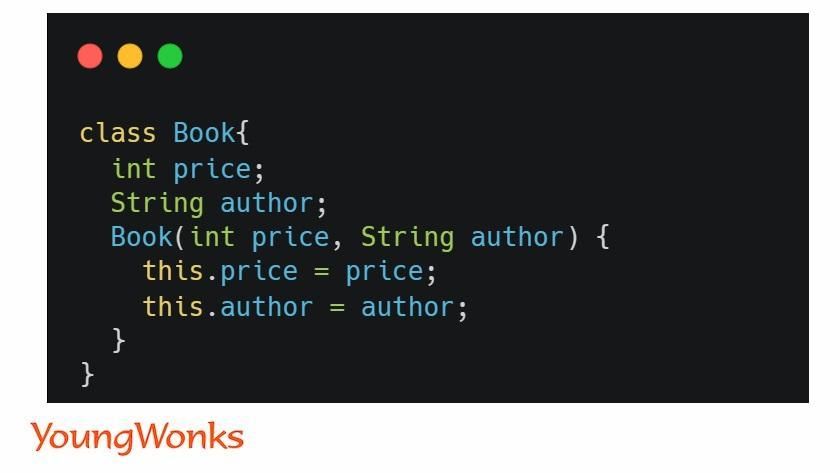
Book class in Python
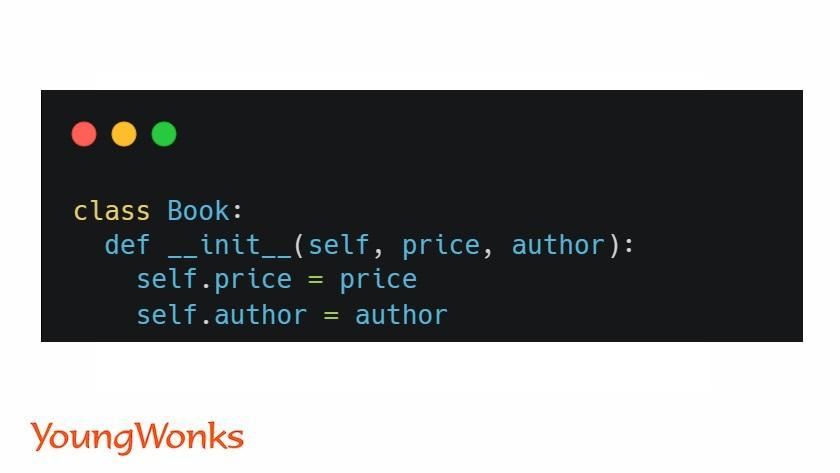
Error handling
Java provides built-in error handling capabilities through the use of try/catch blocks. A try block is used to define code that may cause an exception to be thrown, while a catch block is used to define code that will be executed if an exception occurs. Python also provides error handling capabilities through the use of try/except blocks. This makes it easier for developers to debug and handle any errors that may occur in their code.
Java SE vs Python3
Java Standard Edition (Java SE) consists of a Java Runtime Environment (JRE), which includes the JVM as well as core classes and supporting files. It also provides APIs for writing applications in the Java language. Java SE is used to create distributed and network-centric applications, web applications, and android applications. Additionally, it provides tools for debugging and testing programs as well as for managing memory and performance of the system.
With Python3, we get an easy-to-learn language that offers great flexibility and scalability for developing applications quickly. It also supports cross-platform compatibility so we can write code once and run it on different machines without any additional changes.
Just in time compiler
Just in time (JIT) compiler is a type of compiler that compiles code at runtime rather than during build or compile-time. JIT compilers take the intermediate code generated by language interpreters and other compilers and convert it into native machine instructions for faster execution. This also allows for more efficient memory management as the system does not need to keep all intermediate code in memory. JIT compilers are used extensively in modern programming languages such as Java, C#, and JavaScript.
Python also supports a just-in-time (JIT) compiler which provides an efficient way to execute Python code at runtime. This JIT compiler is a part of the CPython implementation and uses type inference to generate optimized machine. The generated code is stored in memory and reused whenever the same code is called again, which reduces the amount of time it takes for a program to execute. The JIT compiler in Python is used for improved memory management and performance optimization.
Popular open-source libraries
Some of the popular open-source libraries in Java include Apache Commons, Google Guava, and JUnit. Apache Commons is an extensive collection of components and utilities used for a wide range of tasks such as data manipulation, synchronization, collections, I/O operations, and more.
On the other hand, popular open-source libraries in Python include NumPy, SciPy, PyTorch and Pandas. NumPy is a powerful library for scientific computing, providing functions for dealing with arrays, matrices, and higher-dimensional objects. SciPy is an open-source scientific computing library which includes a wide variety of algorithms for optimization, linear algebra, integration, and signal processing. Pandas is a library that provides easy-to-use data structures and tools for data analysis and manipulation.
Apart from these libraries, developers also have access to various web frameworks like Spring in Java and Django/Flask in Python, which make it easier to create complex web applications with minimal effort. To work on these web applications, the Python and Java developers also need to know the fundamentals of HTML.
Which is better, Java or Python?
Python is a programming language that is widely considered to be relatively easy to learn and use. Python's simple syntax, powerful library of packages, and wide range of applications make it an ideal language for software development, data science, web development, artificial intelligence, and more. Python is also highly extensible, meaning developers can write their own libraries and modules to extend its capabilities.
Java, on the other hand, is a statically typed language that requires significant upfront effort and strict adherence to a set of coding conventions for programs to run correctly. Java is more verbose than Python and emphasizes object-oriented programming. Many enterprise applications such as banking software and business information systems are written in Java.
In terms of performance, Java is usually faster than Python because it is compiled into bytecode before execution. That said, due to the presence of packages like Numpy and Pandas in Python, the performance gap between these two languages has been closing over time.
Frequently asked questions
Is Java a compiled language?
Yes, Java is a compiled language. Unlike interpreted languages like Python and JavaScript, which are read line-by-line during execution, a Java program is first compiled into bytecode, which is then executed by the Java Virtual Machine (JVM).
Is Python language compiled?
No, Python is an interpreted language, meaning it is read and executed line-by-line during runtime.
Is it difficult to learn Python?
It largely depends on the individual's background in programming and their overall level of familiarity with coding. For those with prior experience, Python is considered quite easy to learn and the syntax is quite intuitive. However, those without any programming experience may find learning Python more challenging due to its technical nature. Such individuals should join Scratch Coding Classes for Kids before getting into Python Coding Classes for Kids.
Is it difficult to learn Java?
Learning Java can be challenging for those without prior programming experience due to its complex syntax and technical nature. However, for those with a good understanding of object-oriented programming and an understanding of basic concepts such as variables, data types, and control structures, Java can be relatively easy to learn. Additionally, there are many online resources and tutorials available to help learn Java.
What exactly is Machine Learning?
Machine learning is a branch of artificial intelligence (AI) that utilizes algorithms and statistical models to enable computers to learn from big data without explicitly being programmed. It involves the use of large datasets to uncover patterns, detect anomalies and make predictions about new data points using automated methods for analyzing complex sets of information. Machine learning typically involves supervised or unsupervised methods for finding correlations between input features and output labels, as well as more advanced approaches such as neural networks and deep learning. Through machine learning, machines can independently find solutions to problems with minimal human input or intervention. TensorFlow, a machine learning library, is widely used as an industry standard for many automation projects. The matplotlib module of Python helps in data visualization.
Is Python better than Java?
According to Stack Overflow, Python and Java are among the most popular programming languages. When it comes to deciding which language is better, Java or Python, there are many factors to consider. Ultimately, the choice of language will depend on the type of application being developed and the preferences of the developer.
*Contributors: Written by Rohit Budania; Lead image by Shivendra Singh
